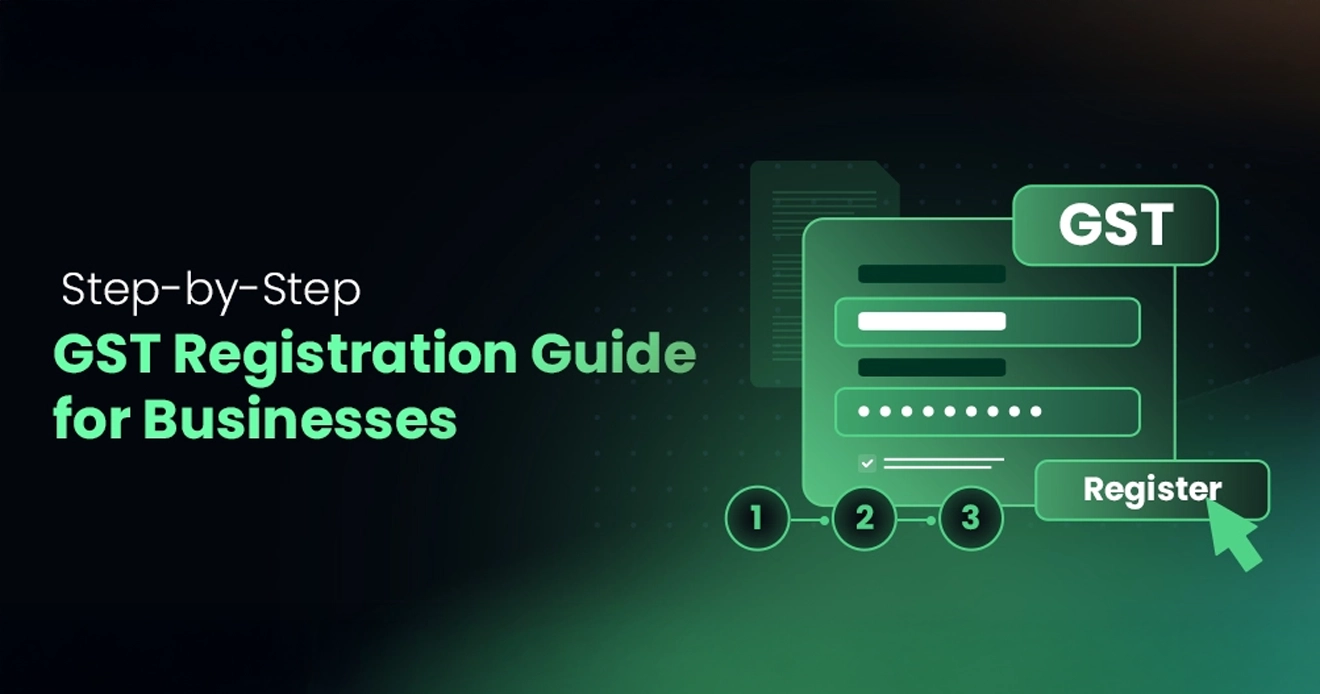Goods and Services Tax (GST) is an extensive, multi-stage, destination-based tax imposed on the supply of goods and services in India. It is a single tax on the supply of goods and services from the manufacturer to the consumer.
Understanding the importance of GST registration for business owners in India is crucial. It’s a mandatory requirement under certain conditions and is key to ensuring compliance and smooth business operations. This guide will explain everything you need to know about GST registration, making it easier for you to complete this essential task.
Important of GST Registration
Before diving into the registration process, it’s important to understand why GST registration is critical for your business:
- Legal compliance: If your business’s annual turnover exceeds a specified threshold, you must register for GST. Failure to do so can result in penalties and legal complications.
- Input tax credit: Registered businesses can claim the input tax credit on their purchases, reducing the overall tax burden.
- Competitive advantage: GST registration ensures legal compliance and enhances your business credibility. It also opens doors to larger contracts and projects, giving your business a competitive edge.
- Expanding market reach: If your business is GST-registered, you can operate across states without restrictions, facilitating growth and expansion.
Who needs GST registration?
Now that we’ve established the importance of GST registration let’s have a look at if your business actually requires it. Here are the key factors to consider:
- Annual turnover: If your business’s annual turnover exceeds ₹40 lakh (₹20 lakh for some special category states), GST registration becomes mandatory.
- Nature of business: Certain types of businesses, irrespective of turnover, need to register for GST. These include businesses making inter-state supplies, supplying certain specified goods or services, or operating from a Special Economic Zone (SEZ).
Understanding different GST registration types:
The GST registration process caters to various business models, recognising the diverse needs of entrepreneurs. Here’s a quick breakdown of the common registration types to help you choose the most suitable path for your business:
- Normal taxpayer: This registration type applies to most businesses exceeding the turnover threshold or involved in specific supplies under the GST framework.
- Composition taxpayer: Ideal for small businesses with a turnover below ₹1.5 crore, the composition scheme offers a simpler compliance process with lower tax rates.
- Casual taxable person: This category is applicable to businesses making occasional taxable supplies within a state, exceeding ₹10 lakh in a year. However, casual taxable persons are not entitled to claim input tax credit.
Gathering documents necessary for a smooth application process
Once you’ve determined your registration type, it’s time to assemble the required documents. Having all the necessary documents readily available streamlines the application process and minimises delays. Here’s a checklist to ensure you have everything in order:
- PAN card of the business entity
- Aadhaar Card of the authorised signatory
- Proof of Business Registration (e.g., Certificate of Incorporation for companies)
- Identity and Address Proof (with photographs) of Promoters/Directors
- Proof of Principal Place of Business (e.g., Rent Agreement, Electricity Bill)
- Bank Account Details with IFSC Code
Step-by-step guide to GST registration
Here is a comprehensive guide to help you through the GST registration process:
- Head to the GST portal: Visit the official GST portal at https://www.gst.gov.in/
- Initiate registration: Click on “Services” followed by “Registration” and then select “New Registration.”
- Enter basic details: Choose “Taxpayer” under the “I am a” option. Select your state and district, enter your business name and PAN, and provide a valid email address and mobile number. An OTP will be sent for verification
- Part A: Applicant details: Fill in details like the applicant’s name, designation, and contact information. You can also add authorised signatories here
- Part B: Business details: This section delves deeper into your business. Here, you’ll provide information on:
- Nature of supply: Specify the goods or services your business deals in
- Principal place of business: Mention the address of your main business location
- Additional places of business: If applicable, list any other business locations
- Bank accounts: Provide details of your business bank account(s)
- State-specific information: Certain states might require additional details.
- Verification and submission: Once you’ve meticulously filled out all sections, carefully review the application for any errors. After verification, submit the application electronically using a Digital Signature Certificate (DSC) or Aadhaar authentication.
- Document upload: Upload scanned copies of all the required documents as per the specified format.
- Verification and approval: The GST department will scrutinise your application and documents. If everything is in order, your GST registration will be approved within 3 working days. You’ll receive your GST Registration Certificate (GSTIN) electronically.
Post-registration compliance
Once you have completed your GST registration, it’s important to be aware of your compliance requirements:
- Monthly/Quarterly returns: Depending on your turnover, you need to file monthly or quarterly GST returns.
- Annual returns: Annual GST returns need to be filed at the end of the financial year.
- Invoice management: Issue GST-compliant invoices to your customers.
- Maintain records: Keep detailed records of your business transactions for at least six years.
- GST payments: Timely payment of GST liabilities to avoid interest and penalties.
Estimating your GST liability with Pine Labs’ GST calculator
Completing GST registration is a vital step for businesses operating in India. The details provided in the guide help you navigate the GST registration process smoothly. By ensuring compliance with GST regulations, you not only avoid legal complications but also position your business for growth and expansion
Wondering about the potential GST liability for your business? Pine Labs’ GST calculator is a free online resource that can help. Simply input your business specifics and the calculator will estimate your GST liability, giving you a head start on financial planning.

